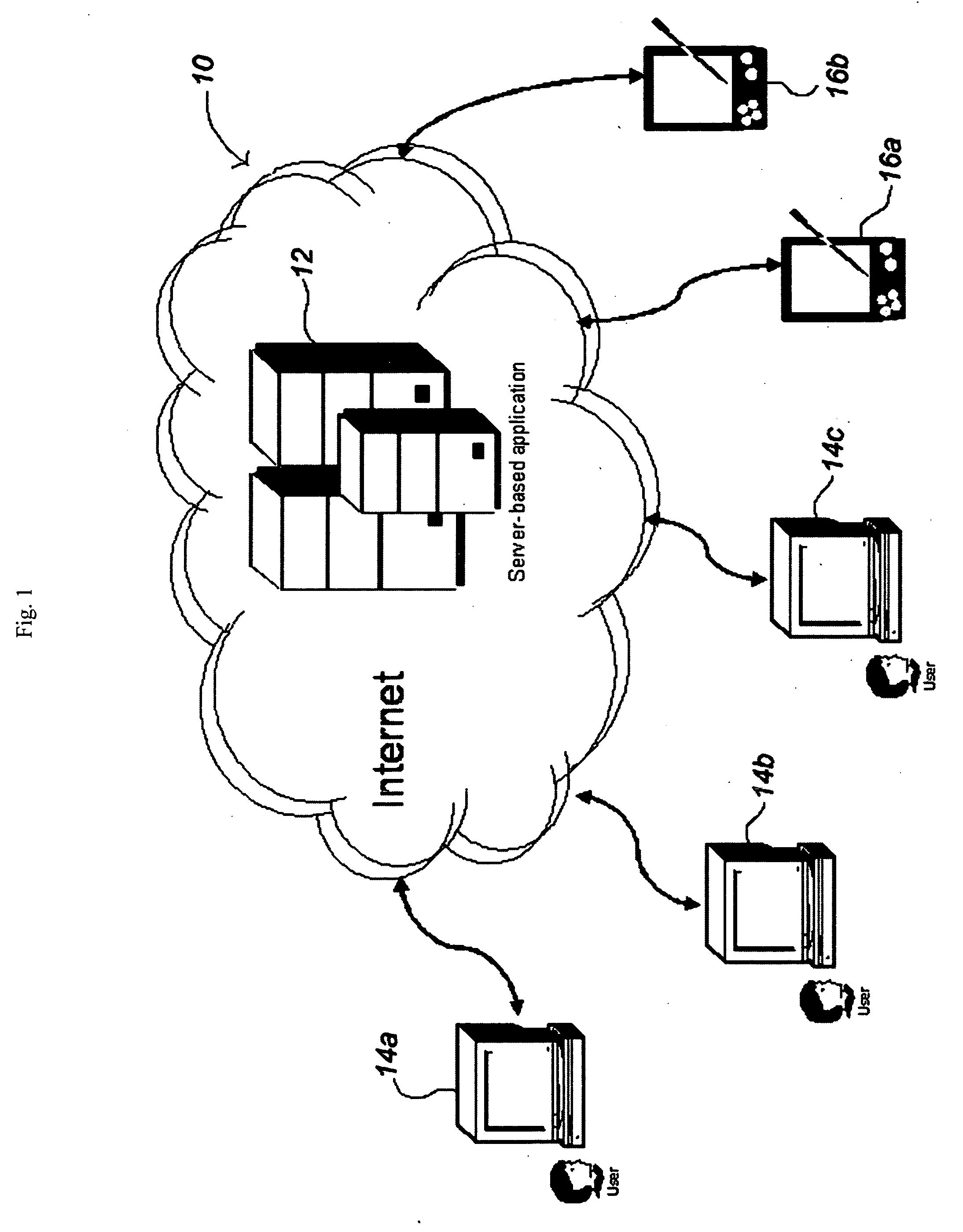Personalized system and method for teaching a foreign language
a technology of a personalized system and a foreign language, applied in the field of foreign language techniques, can solve the problems of lack of excitement in the material used in teaching a foreign language, lack of real-life context and/or up-to-date appeal, and the method of learning a foreign language, etc., to facilitate face-to-face meetings, enrich the learning experience, and expand the existing dictionaries
- Summary
- Abstract
- Description
- Claims
- Application Information
AI Technical Summary
Benefits of technology
Problems solved by technology
Method used
Image
Examples
Embodiment Construction
[0047] The invention generally relates to a method and system for teaching or, from a user's point of view, for learning a foreign language. Generally, a user is a person who wishes to study a foreign language, e.g., a student. In some aspects of the invention, the user also is a subscriber of the system described herein.
[0048] Practicing the invention does not depend on a particular architecture, apparatus, hardware or software platform. The system described herein can be implemented by any suitable combination of components and there may be several ways for realizing the educational system and method of the invention in the form of a computer-run application. While various types of general-purpose devices can be used, it is also possible to construct specialized apparatus to perform the method described herein or any steps thereof.
[0049] The system can be built in several ways. For example, it can be fully standalone, e.g., an autonomous desktop software installation, or it can ...
PUM
 Login to View More
Login to View More Abstract
Description
Claims
Application Information
 Login to View More
Login to View More - R&D
- Intellectual Property
- Life Sciences
- Materials
- Tech Scout
- Unparalleled Data Quality
- Higher Quality Content
- 60% Fewer Hallucinations
Browse by: Latest US Patents, China's latest patents, Technical Efficacy Thesaurus, Application Domain, Technology Topic, Popular Technical Reports.
© 2025 PatSnap. All rights reserved.Legal|Privacy policy|Modern Slavery Act Transparency Statement|Sitemap|About US| Contact US: help@patsnap.com



